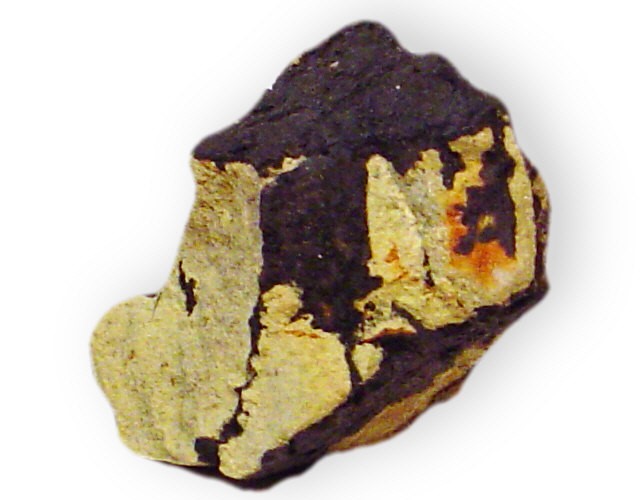Ingredients of Gosu - Explanation of ingredients of natural and synthetic Gosu
We will explain what ingredients are used to make gosu.
First of all, there are two types of gosu: natural gosu and synthetic gosu.
Natural Gosu

Natural gosu is called asbolite. It is mined from mines. Therefore, the raw material for natural gosu is stone .
The ingredients of natural gosu include silicic acid, manganese oxide, aluminum oxide, iron oxide, cobalt oxide, and copper. Natural gosu is produced in several places.
Natural gosu from Islamic regions
It is called Sumaruto, Huiqing, etc.
It is called Huiqing because Islam was also called Huiism, and it was exported from Islam to China until the Ming Dynasty.
Natural gosu from China
In Japan, natural gosu is also called Kara gosu, because during the Edo period, natural gosu produced in China was used.
During the Edo period, blue and white porcelain was made using natural gosu imported from China. Natural gosu began to be mined in China after the import of natural gosu from Islam ceased during the Ming Dynasty.
Then, people started to search for and utilize mines in China where natural gosu could be extracted. As a result, natural gosu mines were discovered in Yunnan, Guangdong, Jiangxi, Zhejiang, Shaoxing City, Zhejiang Province, and Jinhua City, Zhejiang Province.
Natural Japanese gosu
Although it contains a lot of impurities and its quality as a gosu paint is not very high, gosu has been mined in Japan since around 1665.
Natural gosu was produced in the Cenozoic Tertiary layer from Seto City to Tajimi and Toki City in Aichi Prefecture. The mining of this natural gosu was managed by the Owari clan.
This gosu mine was closed during the Meiji period when high-purity cobalt oxide became available for cheap import from overseas.
Synthetic Gosu

Now, synthetic gosu is a gosu made chemically with cobalt as its main component.
The raw materials used for this synthetic gosu are as follows:
Gosu is made by mixing cobalt oxide (CoO) as the main component with iron oxide (Fe 2 O 3 ) , nickel oxide (NiO) , manganese dioxide (MnO 2 ) , and kaolin . Aluminum oxide (Al 2 O 3 ) may also be added.
These components of gosu combine to form a spinel structure.
During firing, the gosu, which has a spinel structure, dissolves into the vitrified part of the glaze, producing a beautiful blue color.
Now, we will introduce each of the compounds used as raw materials for gosu.
Cobalt oxide (CoO)
Possible oxidation states of cobalt oxide
Oxidation number 2 Co2 + : CoO
・Oxidation number 3 Co3 + : Co2O3
・Mixture of oxidation numbers 2 and 3 : Co3O4
*Co2O3 rarely exists in nature.
Cobalt oxide, CoO, used in ceramics, is a grey to black powder.
The melting point (the temperature at which a solid turns into a liquid) is 1933°C.
Arita ware is often referred to as cobalt blue, because the blue of Arita ware is primarily composed of cobalt oxide.
Iron oxide ( Fe2O3 )
Possible oxidation numbers of iron oxide: FeO with oxidation number 2
・Fe2O3 with oxidation number 3
・Fe 3 O 4, which has a mixture of oxidation numbers 2 and 3
There is.
Fe3O4 is what is known as black rust, and Fe2O3 is what is known as red rust .
The so - called vermilion used in pottery is Fe2O3 .
The melting point (the temperature at which a solid turns into a liquid) is 1566°C.
The reason it is called Bengala is because it was imported from the Bengal region of India during the Edo period.
The iron turns brown in color.
Nickel oxide (NiO)
Possible oxidation numbers of nickel oxide: NiO with an oxidation number of 2
・Ni2O3 with an oxidation number of 3
There is.
NiO is used in pottery.
The melting point (the temperature at which a solid turns into a liquid) is 1984°C.
Nickel oxide is used as a colorant because it gives a bright green color.
Manganese dioxide ( MnO2 )
The oxidation states that manganese dioxide can take are: MnO 2 , which has an oxidation state of 2
is.
The melting point (the temperature at which a solid turns into a liquid) is 535°C.
Manganese dioxide gives the solution a purple color.
Aluminum oxide (=alumina, Al 2 O 3 )
Alumina is aluminum with an oxidation number of 3 , Al2O3 .
The melting point (the temperature at which a solid turns into a liquid) is 2072°C.
Kaolin (= kaolinite, Al 4 Si 4 O 10 (OH) 8 )
In pottery it is mainly used as clay.
Kaolin is added to improve the adhesion between the base (plate) and the gosu.
These are the raw materials used to make gosu.
Now, the melting points of all the substances used as raw materials for gosu are over 1300℃.
However, the reason it remains liquid even when fired at a temperature lower than its melting point is because the gosu and glaze ingredients are fired together, causing it to melt at low temperatures.
This time we have introduced the ingredients of gosu. Over the years, we have adjusted the balance of these ingredients to create a beautiful gosu color.
If you would like to purchase our Gosu, you can do so from this link.
References: Masataro Onishi. Traditional techniques of pottery. Rikogakusha. 1978 References: Seto City. History of Seto City (Ceramics History Volume 3). Seto City. 1967






